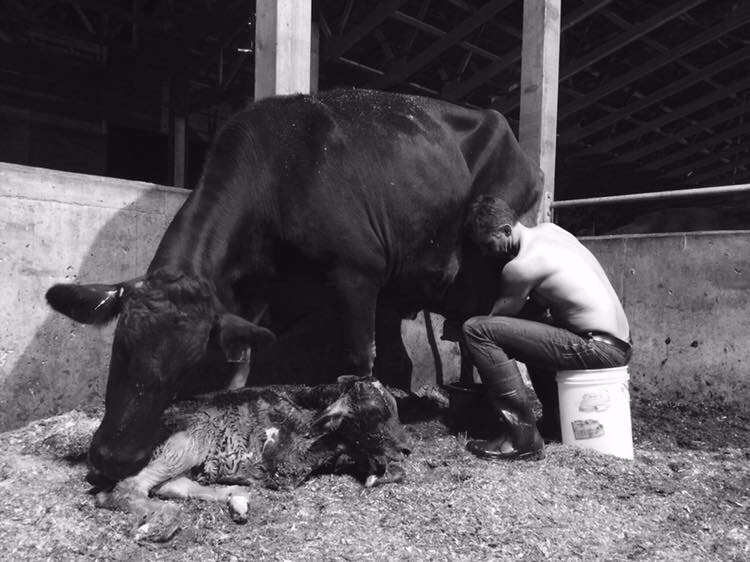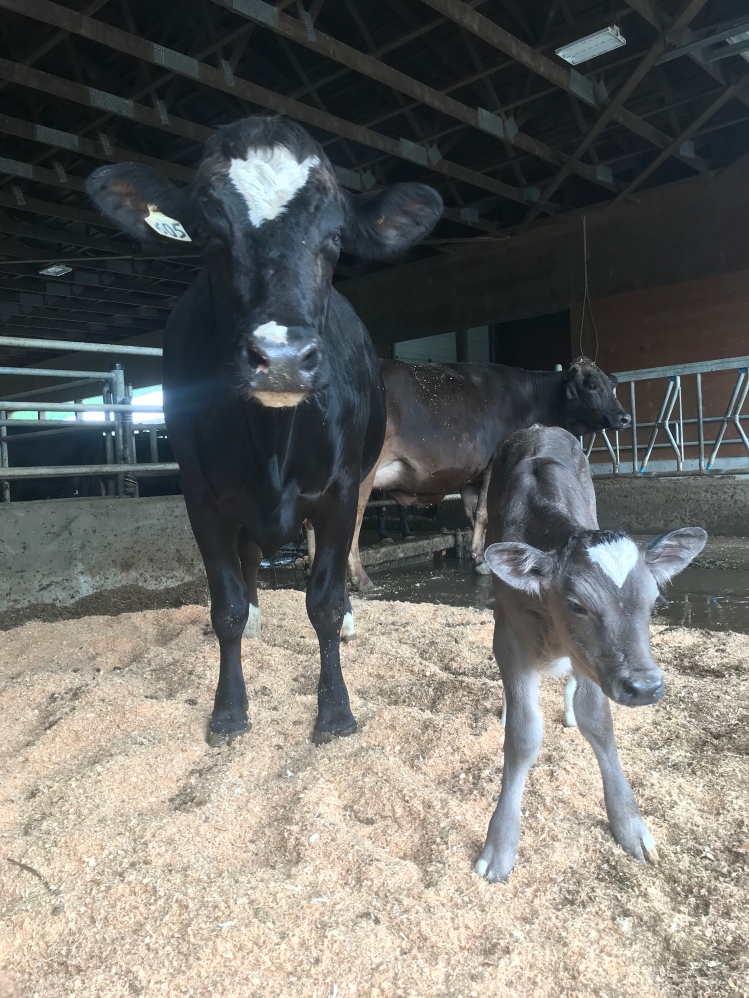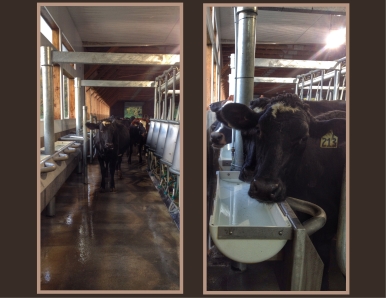“We feel entitled to artificially inseminate a cow and steal her baby, even though her cries of anguish are unmistakeable. Then we take her milk that’s intended for her calf and we put it in our coffee and our cereal.” ~Joaquin Phoenix
Sounds awful. Especially coming from someone we admire and look up to.
But while Joaquin might be an amazing actor, he has little hands-on knowledge about the care and attention and LOVE that is involved in dairy farming.
Let’s analyze his statement for a moment:
• Artificially inseminating a cow. Cows on dairy farms typically give birth once yearly, just like wild bovines and their cousins (moose, deer, elk, bison, yak, buffalo, etc). While a bull breeds the cows on our farm, many other farms use artificial insemination to breed their cows. AI, as it is commonly called, is the process of introducing semen to the cow’s reproductive tract. It’s much gentler for the cow to be bred by AI rather than being mounted by a 2000 pound bull! But regardless of breeding method, cows are only bred when they are in heat – that is, during their fertile period, which happens every 21 days. Cows in heat want to be bred – you should see our cows try to get to our bull when they are in heat! The desire to reproduce is so strong.

• Cow & calf separation. As farmers, it’s our job to ensure that both our cows and their calves are well cared for. There are several variables that impact our decision to separate cow and calf. Does the cow clean and care for her calf? Sometimes the mother doesn’t do a good enough job or shows no interest in her calf at all. Is the calf safe? We’ve had cows try to hurt their calves. Is the cow feeding her calf? Some cows will allow their calves to nurse, others are totally adverse to the idea and kick or move away from their calf when he or she tries to nurse. In short, each situation is different but typically if the cow and calf are getting along well they spend around 24 hours together. Once the calves are gently and calmly moved to our calf nursery they receive lots of affection, attention, and care from our family. We house our calves in pairs or sometimes triples at first so they always have a companion. They have lots of soft comfortable bedding and are well fed with plenty of milk from our herd and hay and grain as they grow older. They are weaned at three months of age and then moved to group pens with calves of their own age. Our calves are healthy, lively, and vigorous and we know that they receive the best care possible. It only makes sense for us to pay such close attention to these young animals; after all, they are the future of our farm! As for the cow, she too is content. Her herd is very important to her and she eagerly rejoins her friends when she has recovered well from calving. You’ll find her spending her days eating (lots of eating!), relaxing in a comfy stall or out on pasture, socializing with her herd mates, or enjoying a good scratch from the automated cow brush. Neither cow nor calf display any signs of distress, but are calm, relaxed, and content. In fact, visitors at our farm always comment on how quiet our barns are – just cows and calves contentedly going about their day with their every need met. Sorry Joaquin, there are no “cries of anguish”.

• “Stealing” milk meant for calves. Did you know that a dairy cow can produce upwards of 40L of milk per day? Her calf only drinks a fraction of that – usually 10-12 L per day. Our calves ARE fed their mother’s milk, but it is this EXCESS milk that is shipped to the processor and finds its way to our consumers’ tables.

Milk is a nutritional powerhouse. It’s full of essential nutrients so beneficial for our health. And yes, it is produced responsibly and ethically by family farms just like ours. Farms where cows are cared for with respect and compassion are the norm, not the exception.
As farmers, we chose this life because we love spending our days with our animals. We ensure they are happy and healthy, well fed, comfortably housed, and always, ALWAYS, treated with affection and respect. We love our cows.

It’s this love that draws us out of our warm beds to assist an overnight calving. It’s love that keeps us going when the days are long and full of hard work ensuring our animals’ every need is met. And it’s this love that is the over arching commonality between dairy farms all across the world. ❤️


































